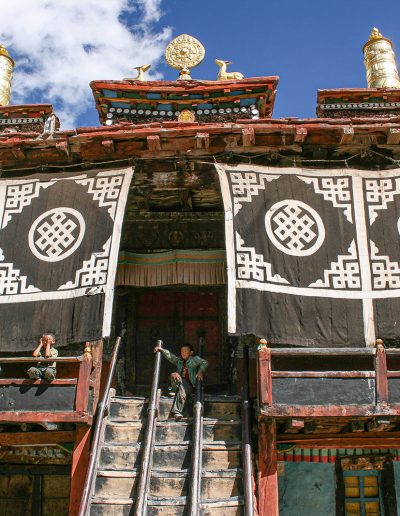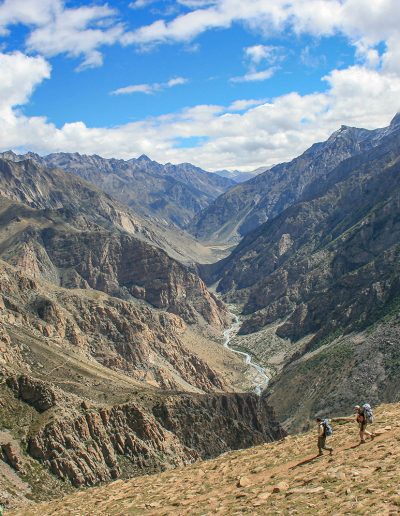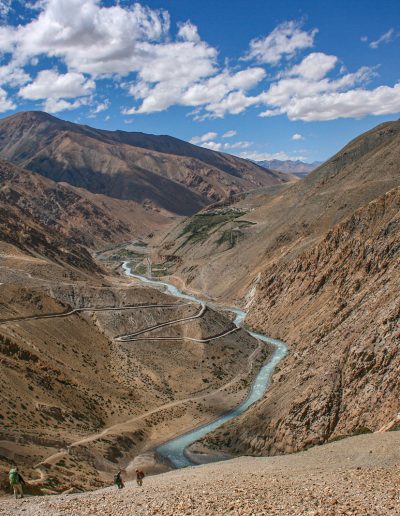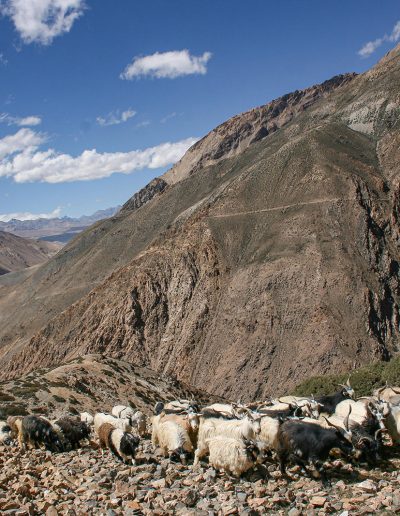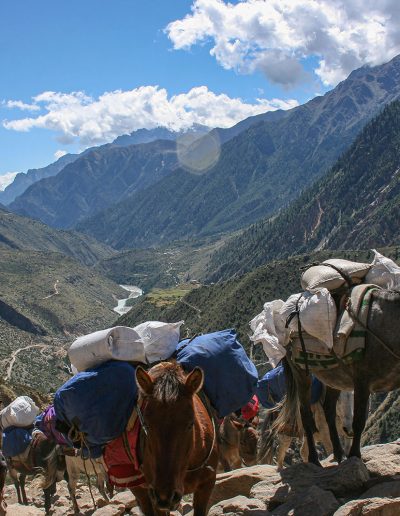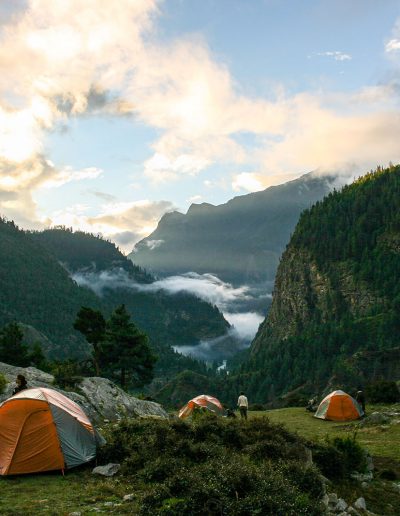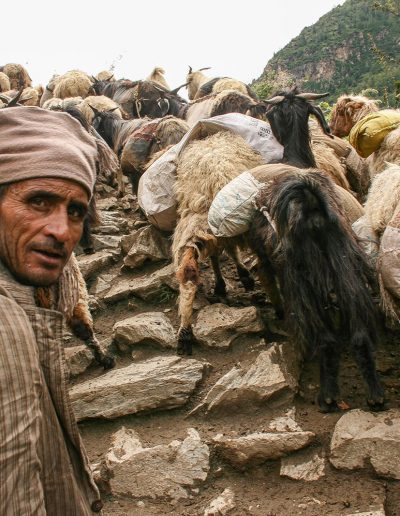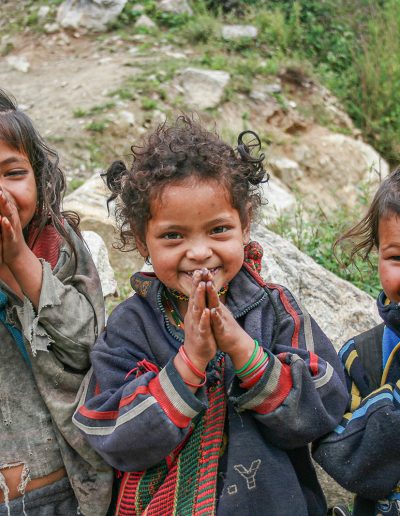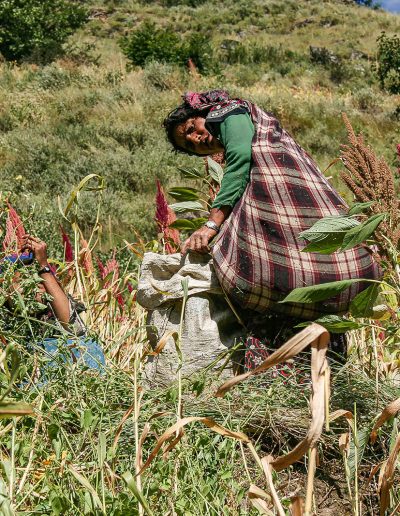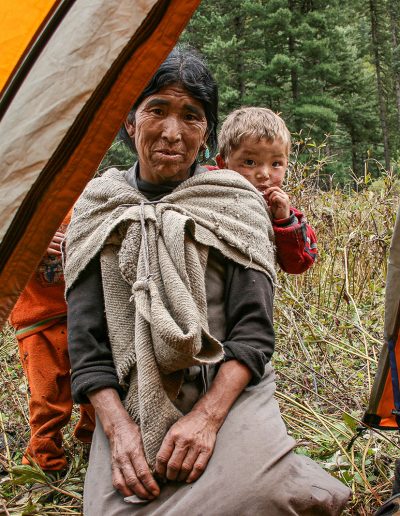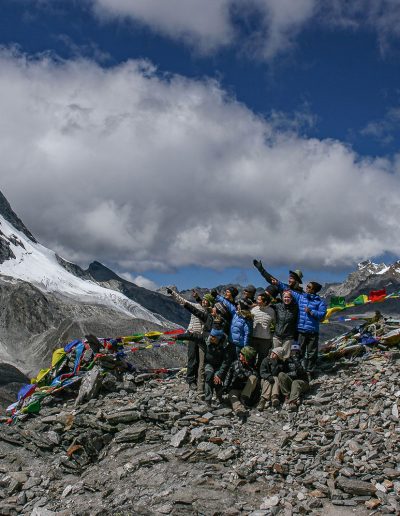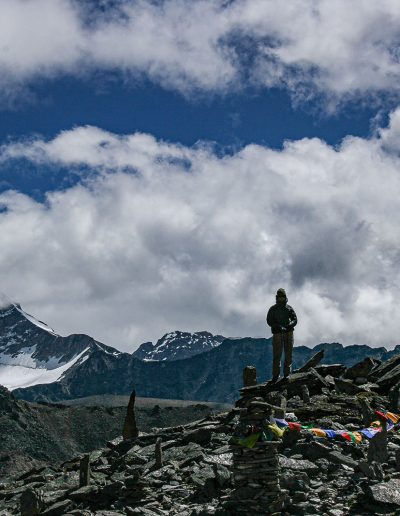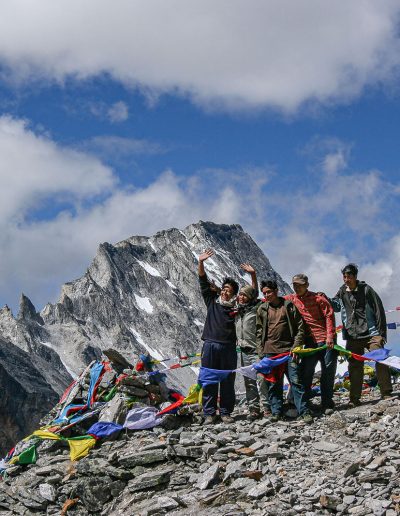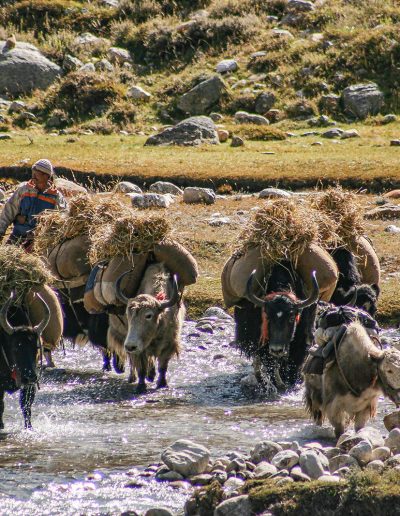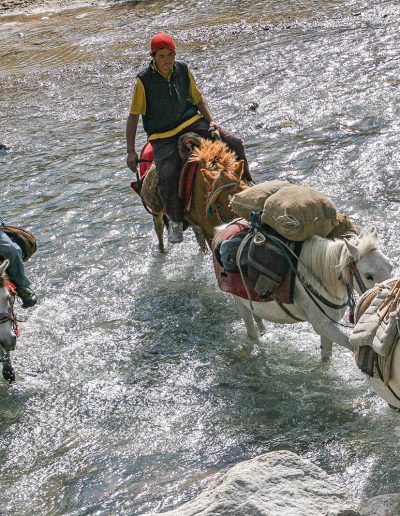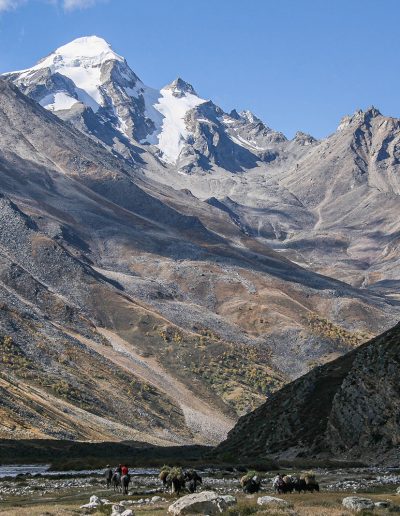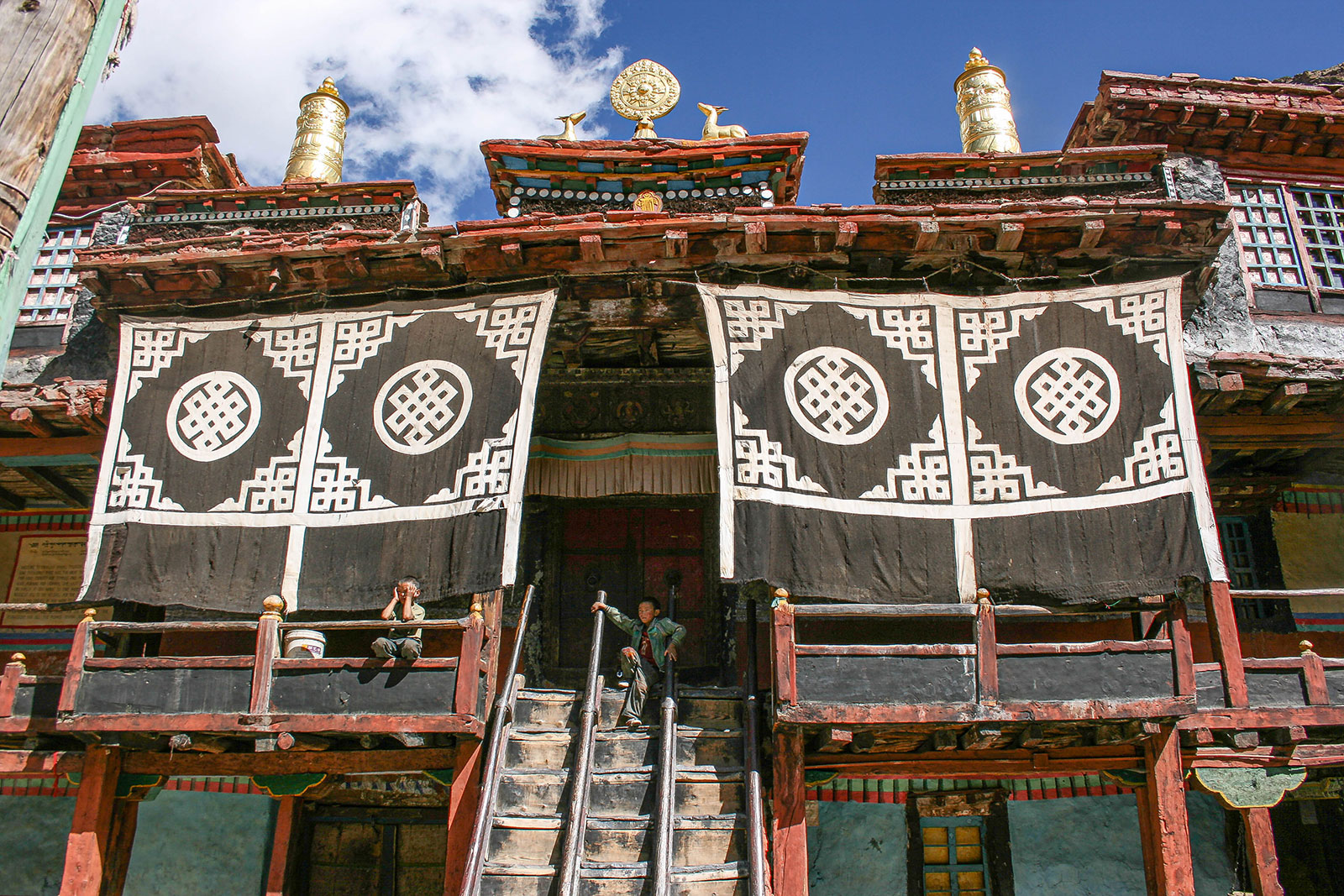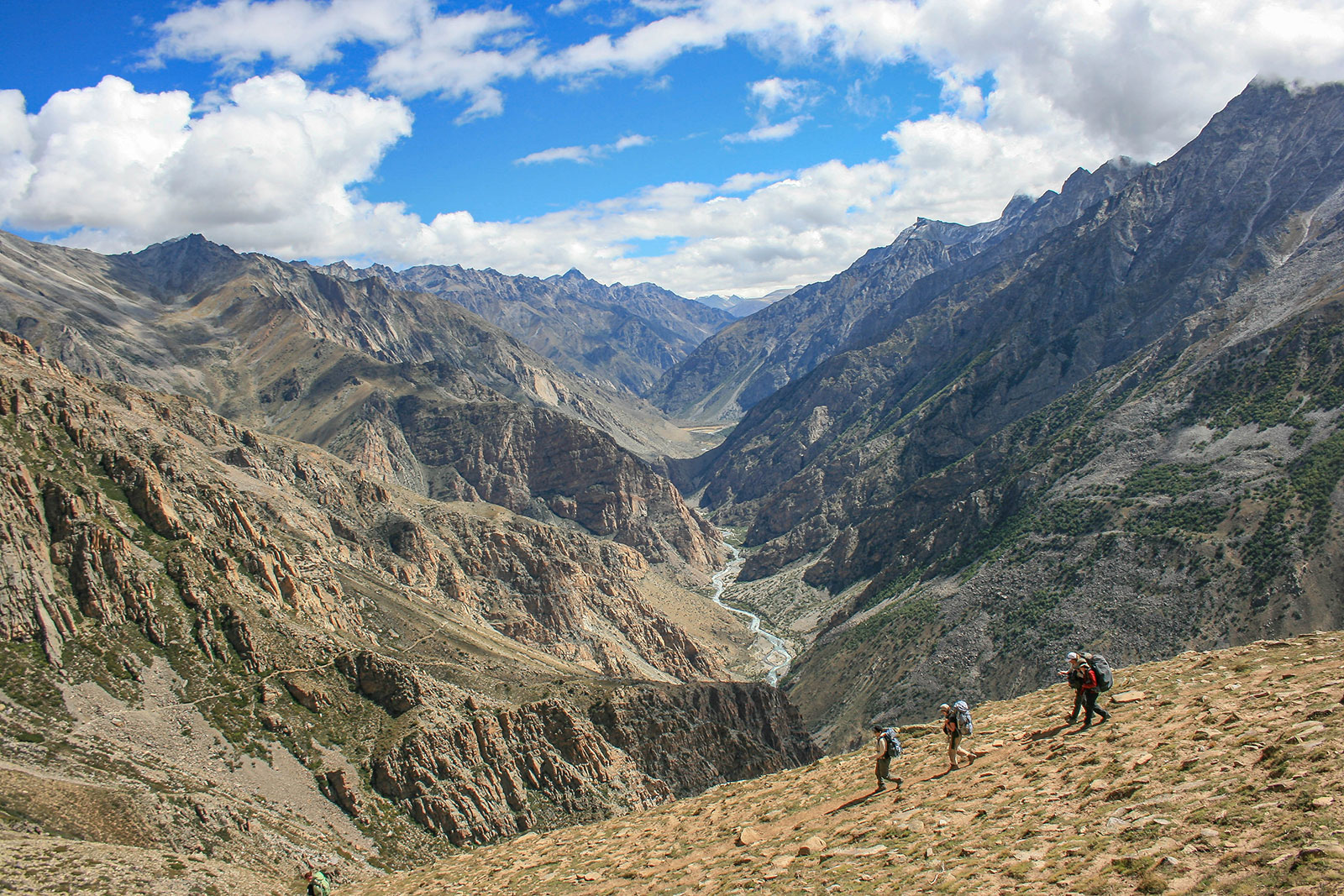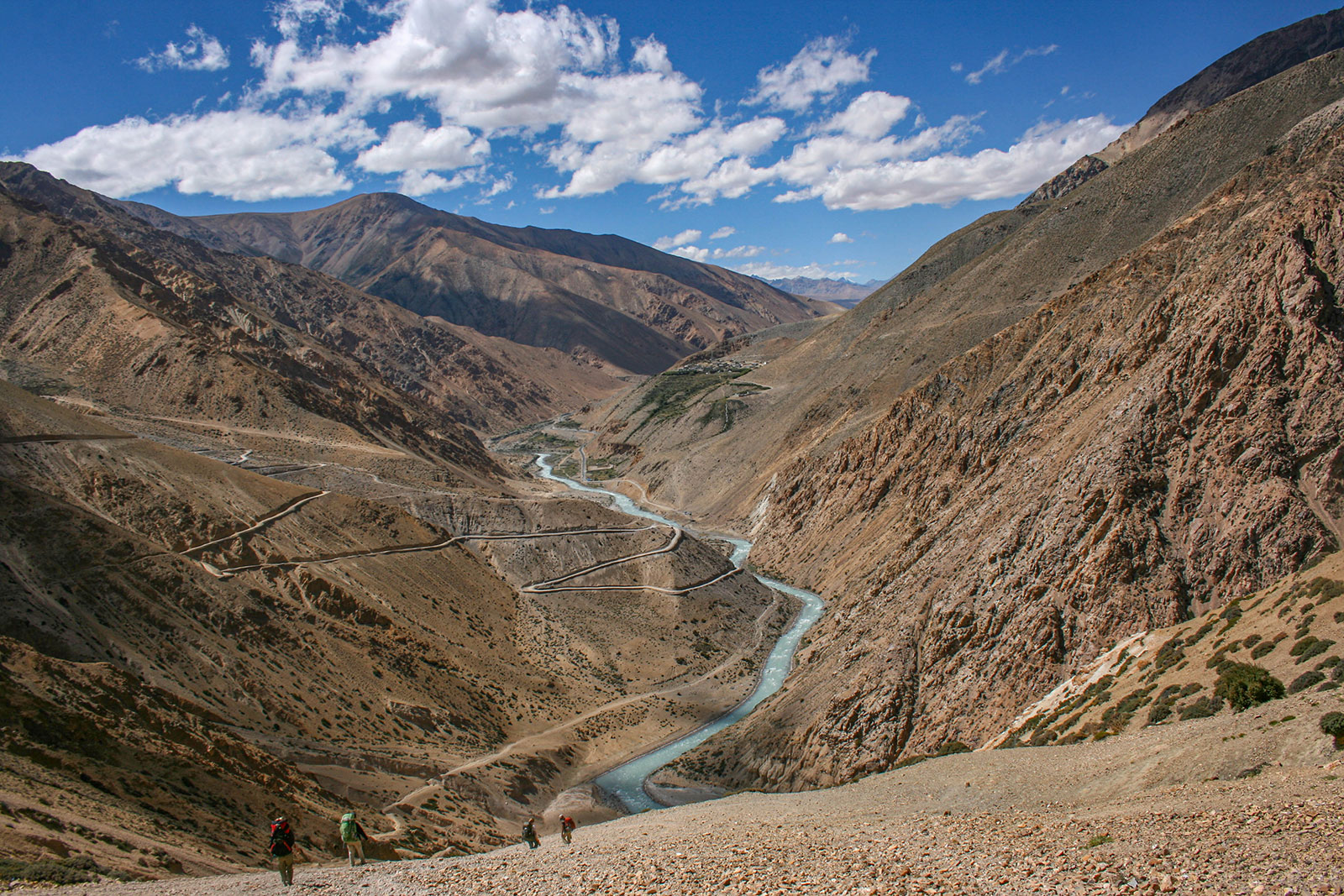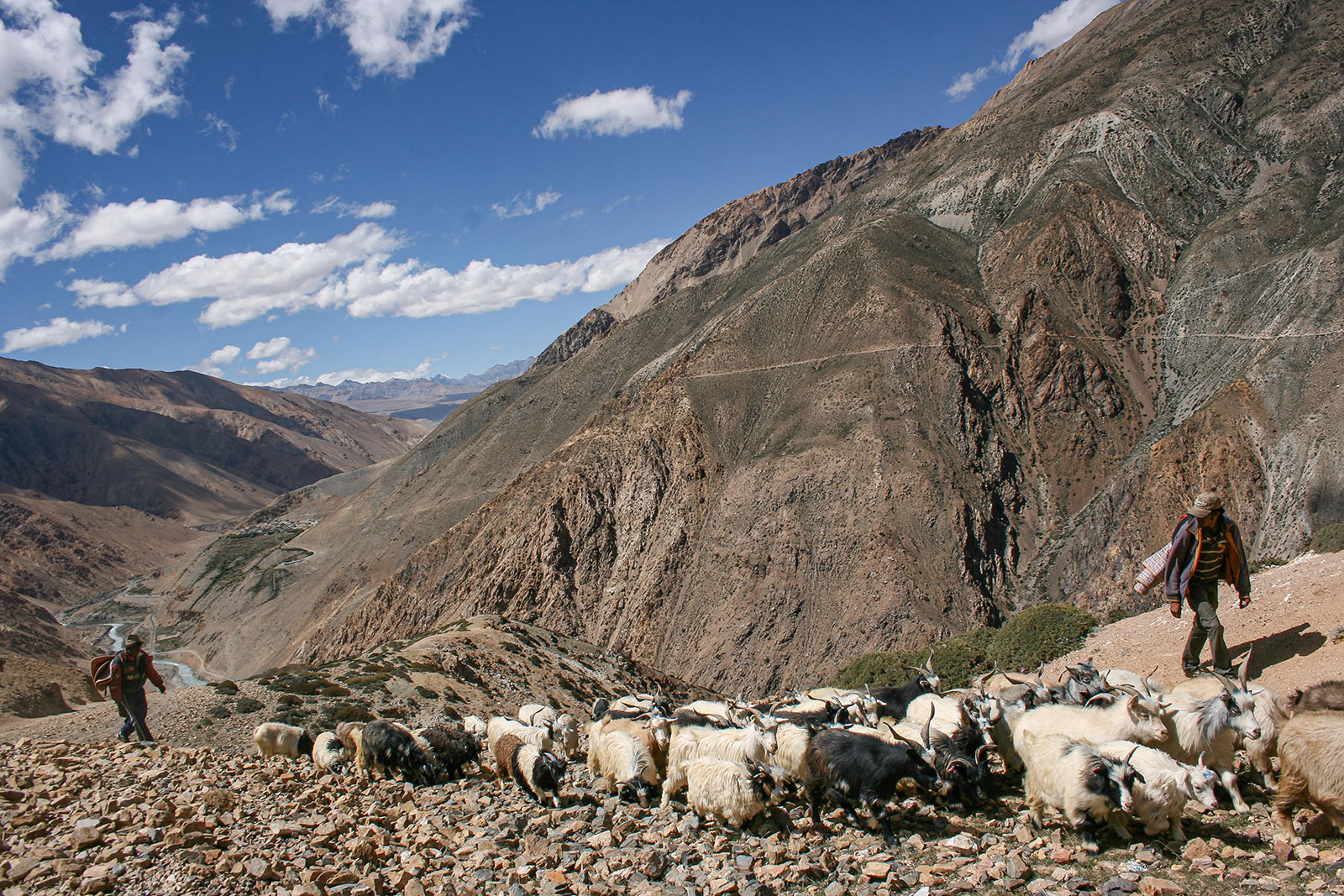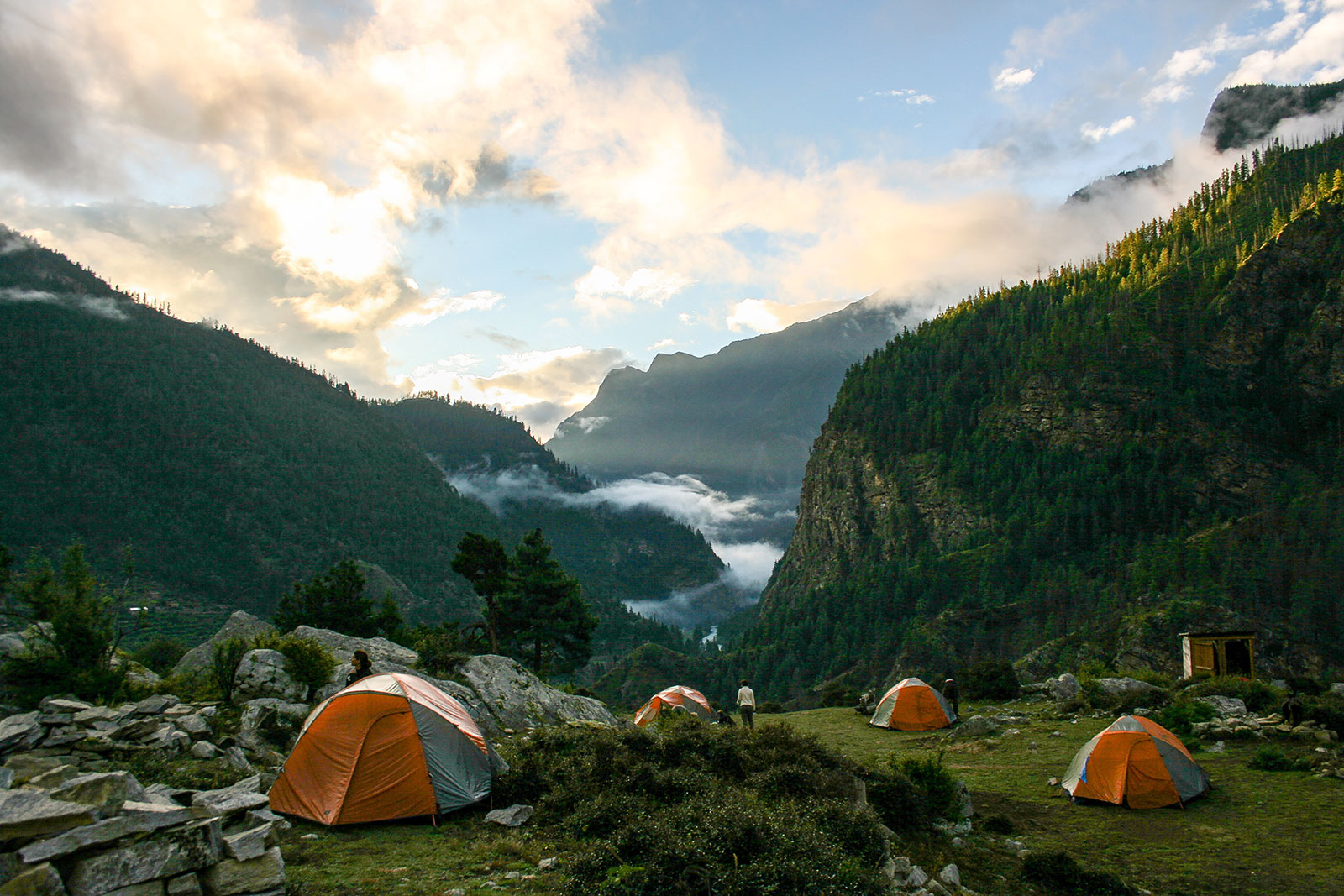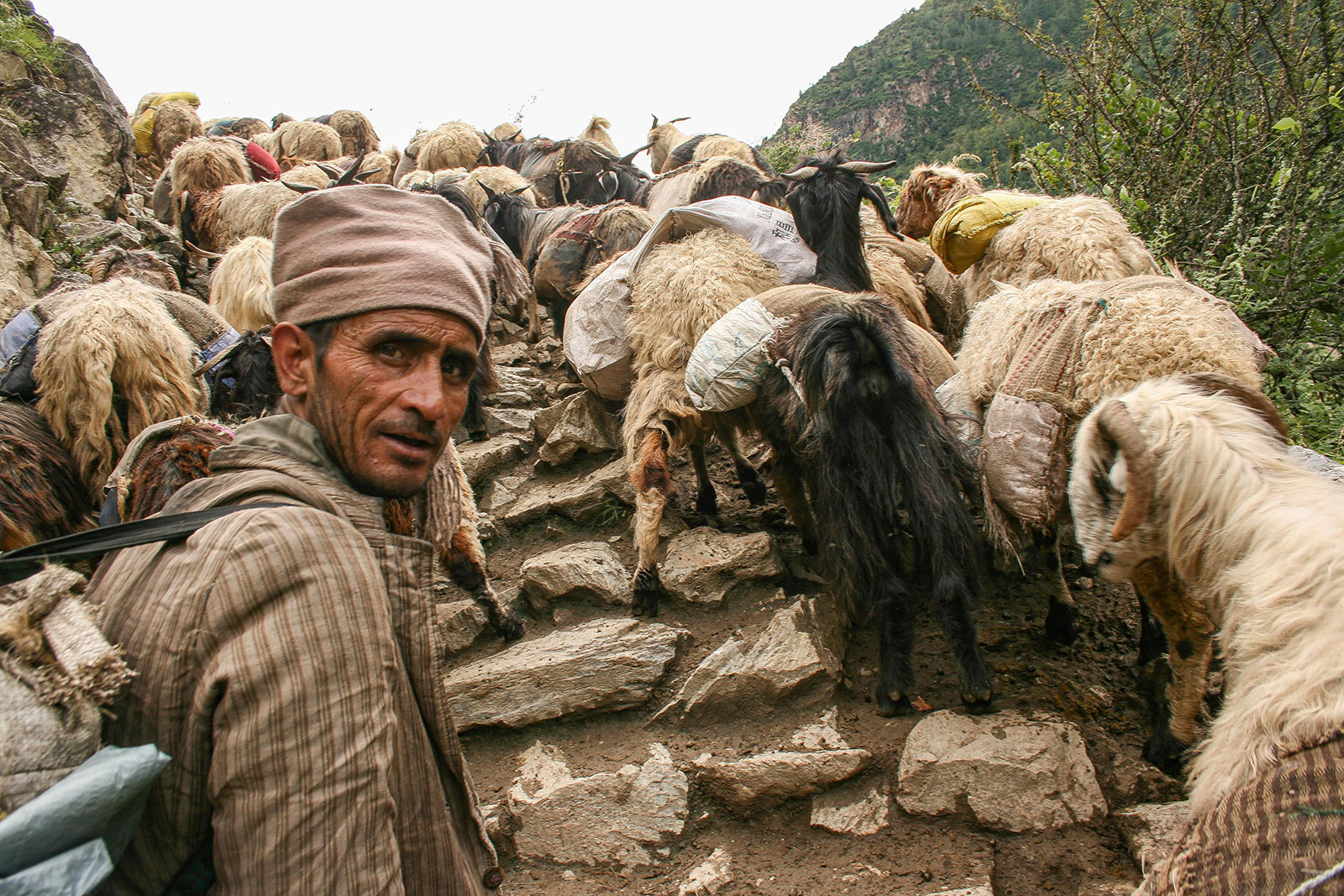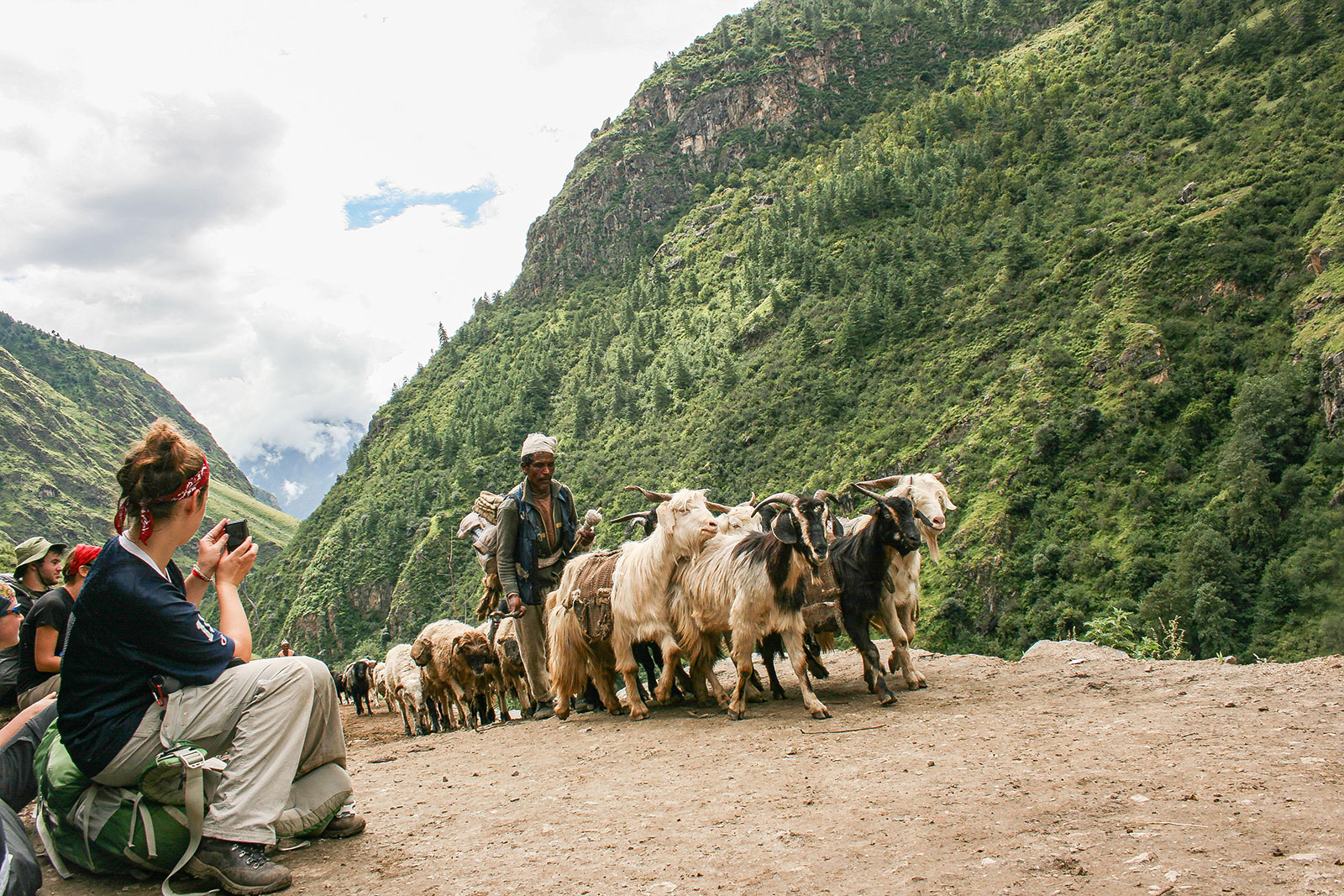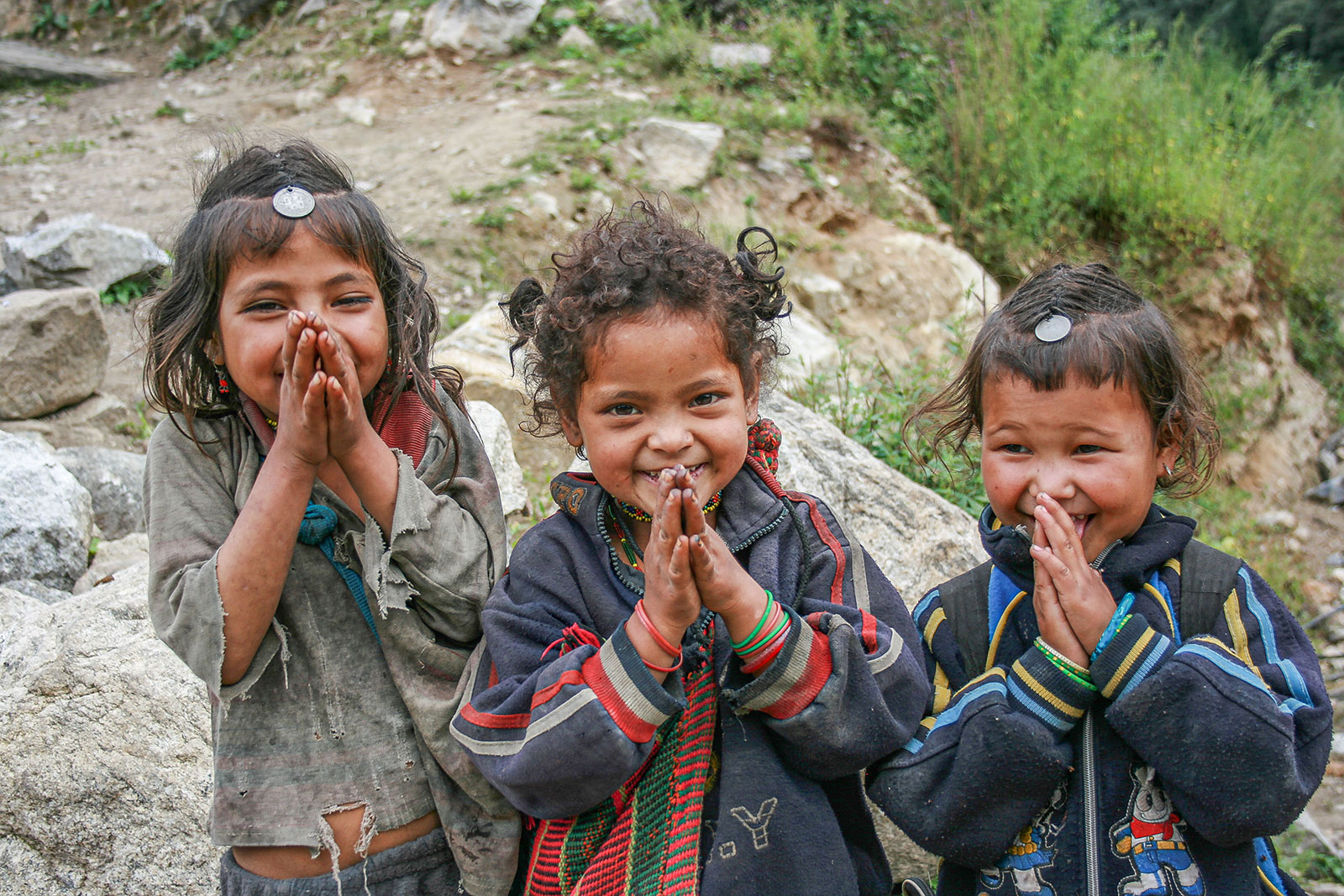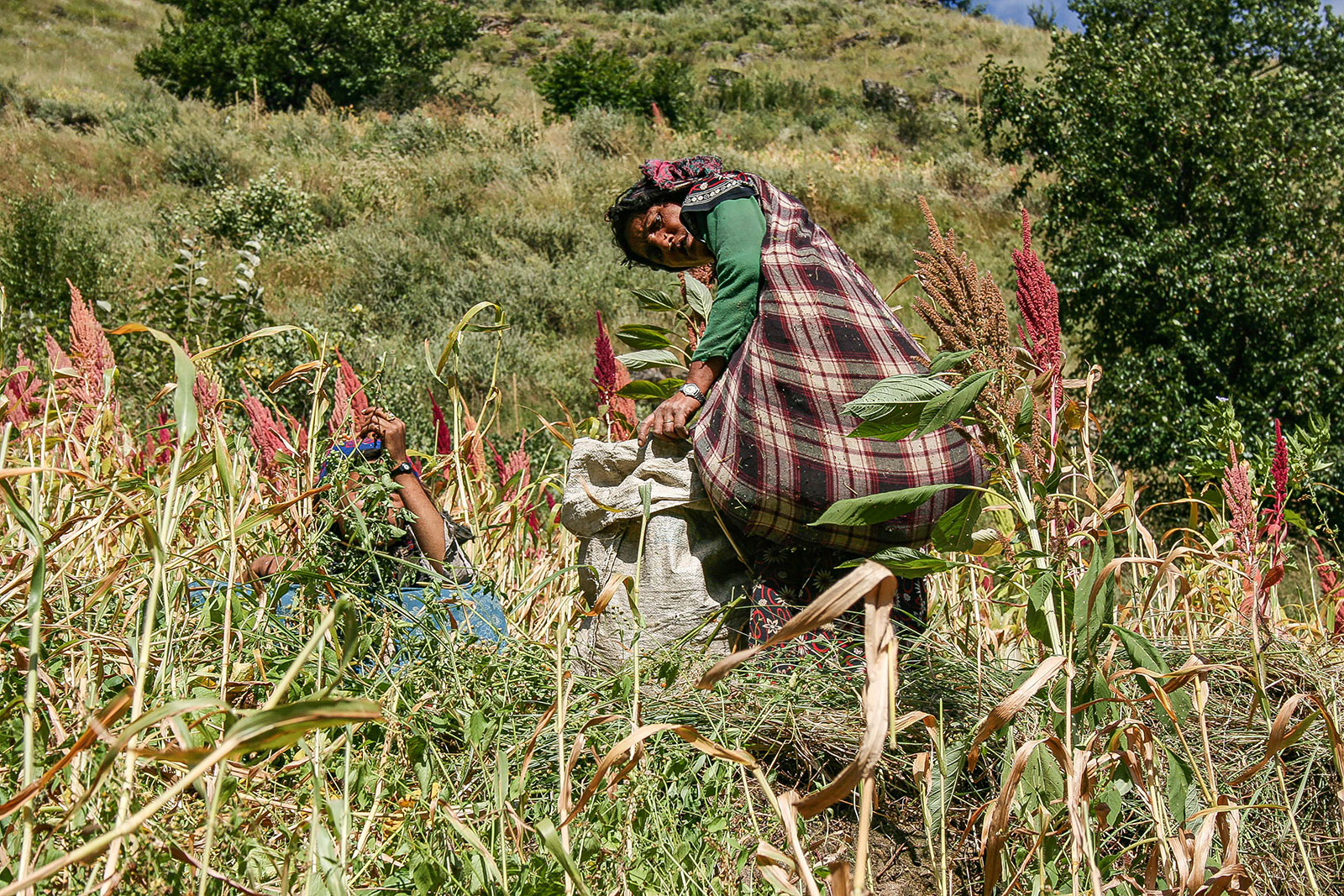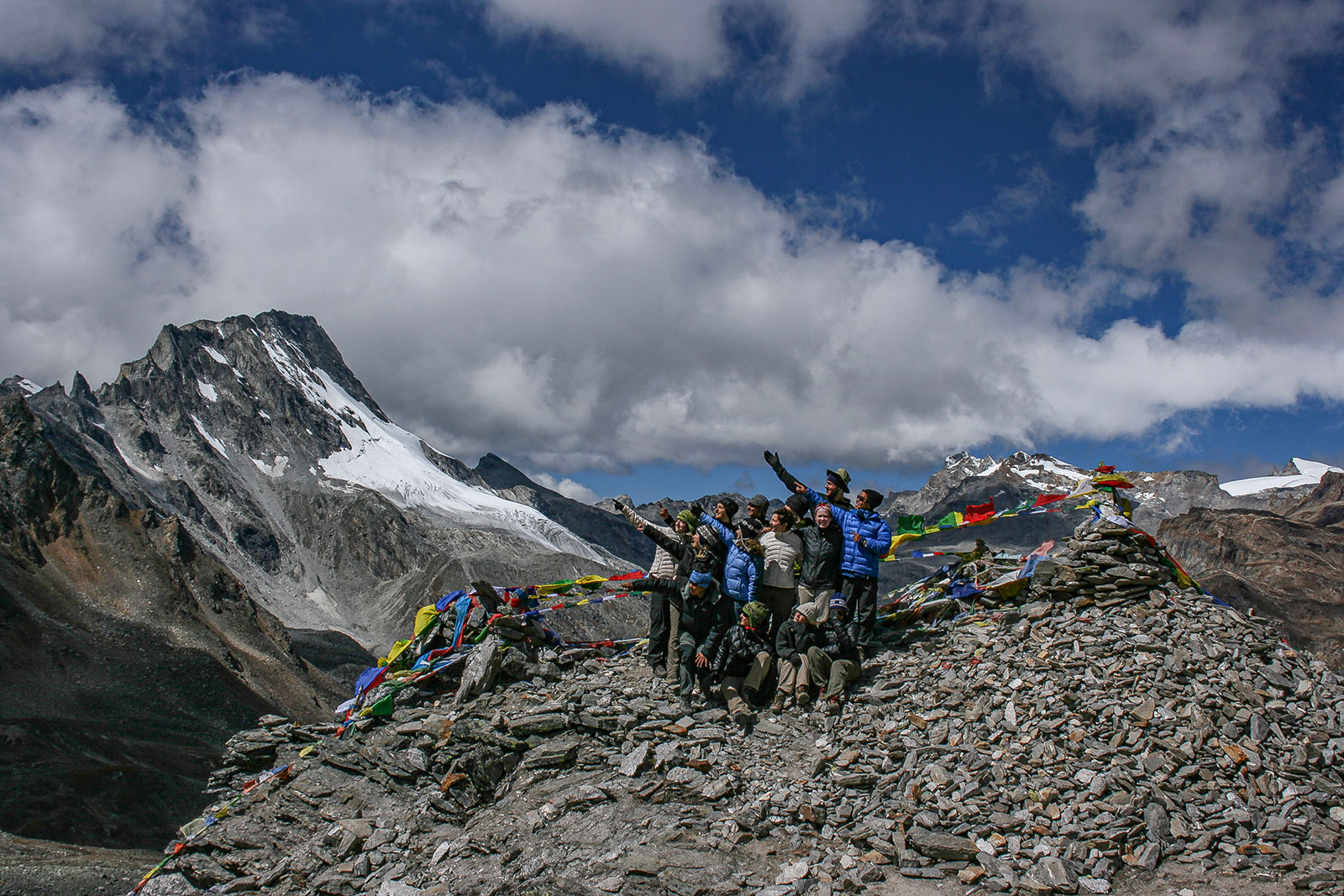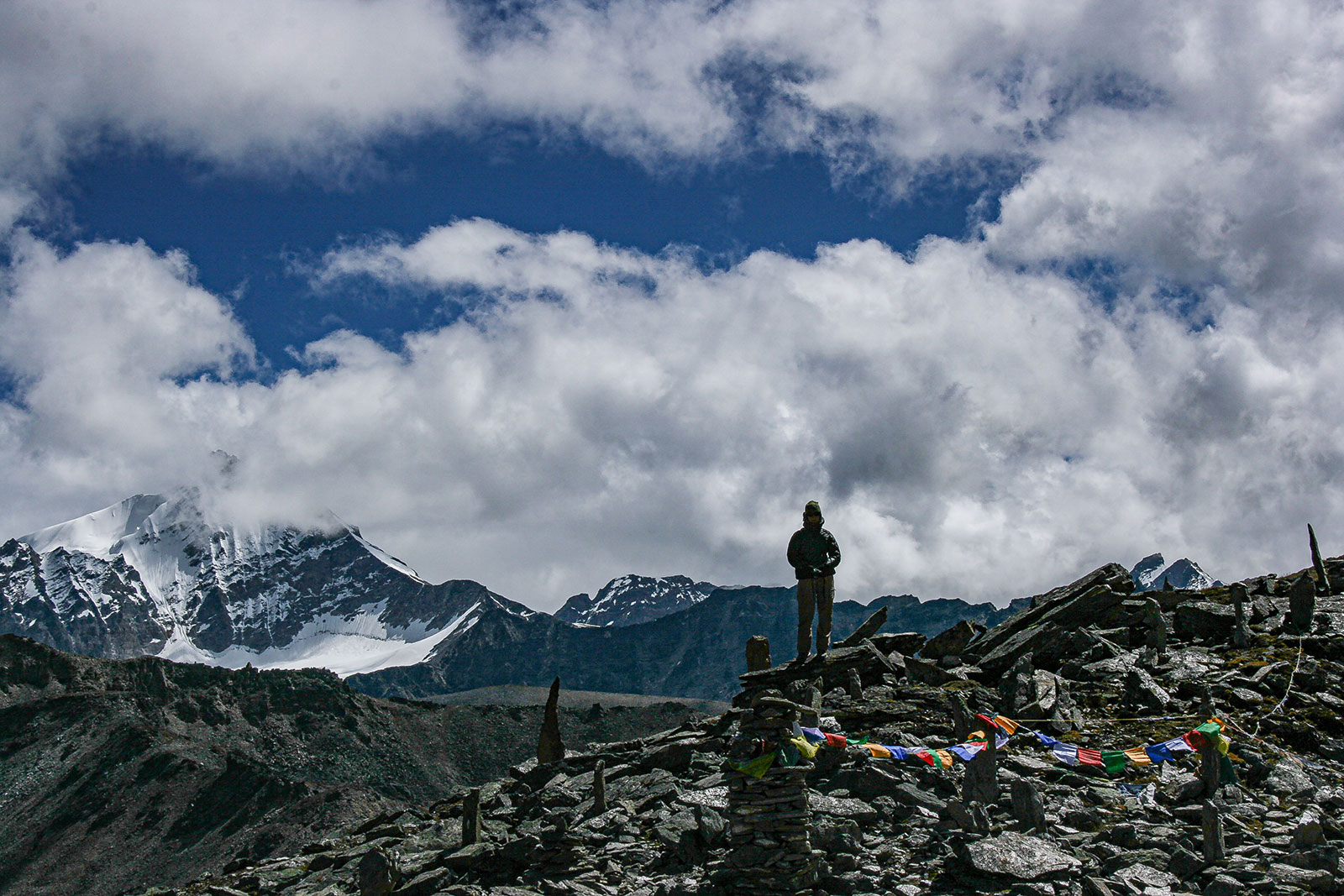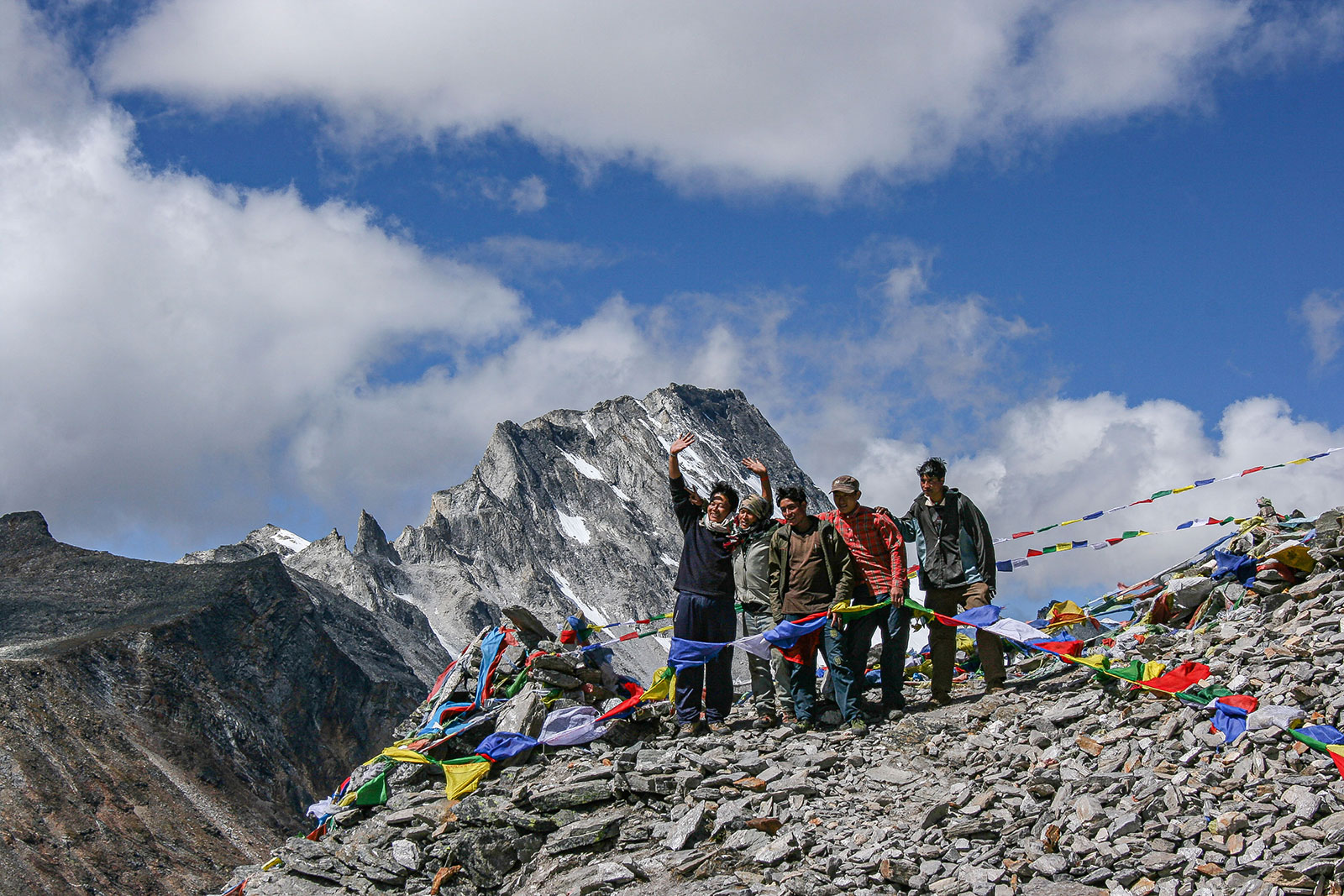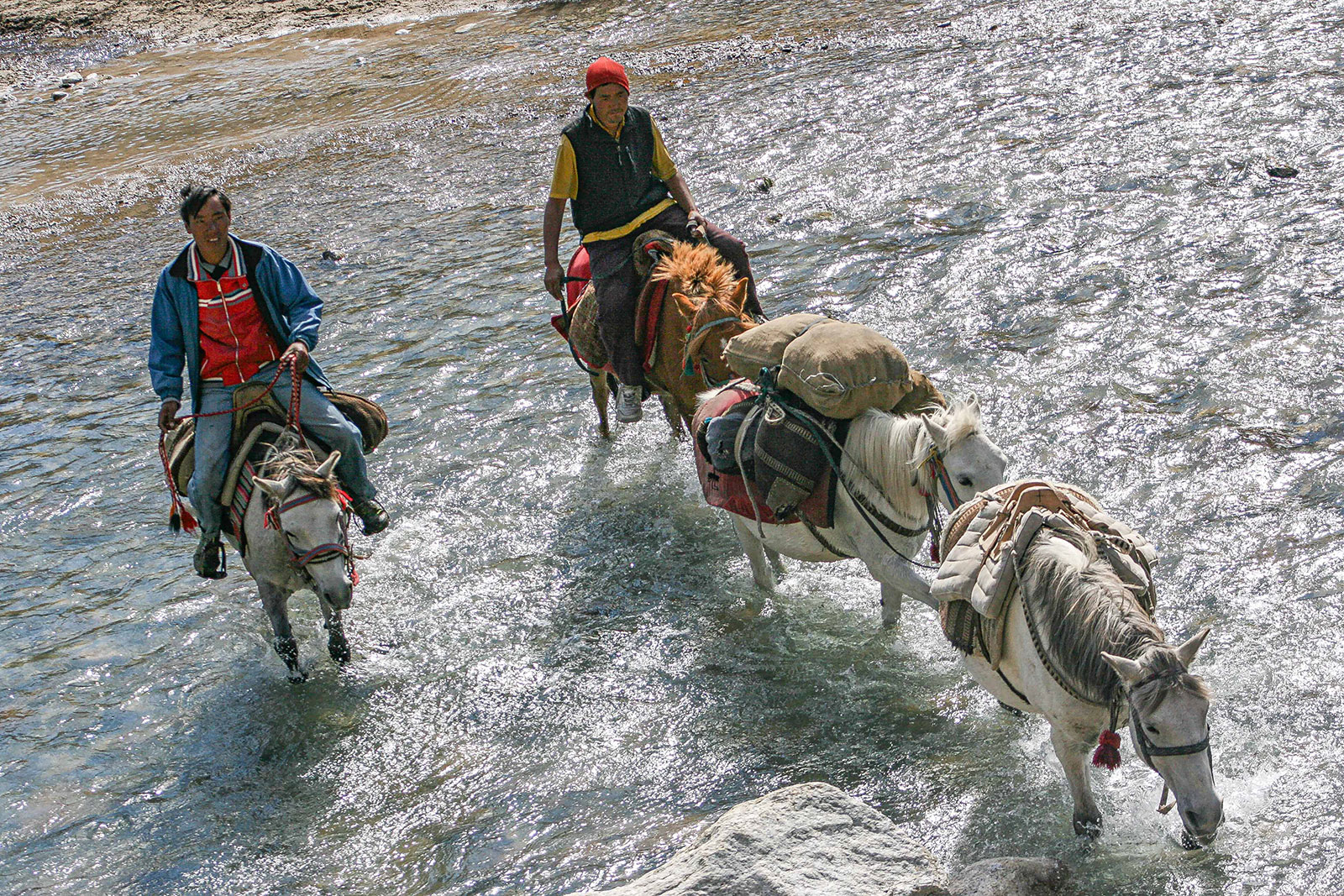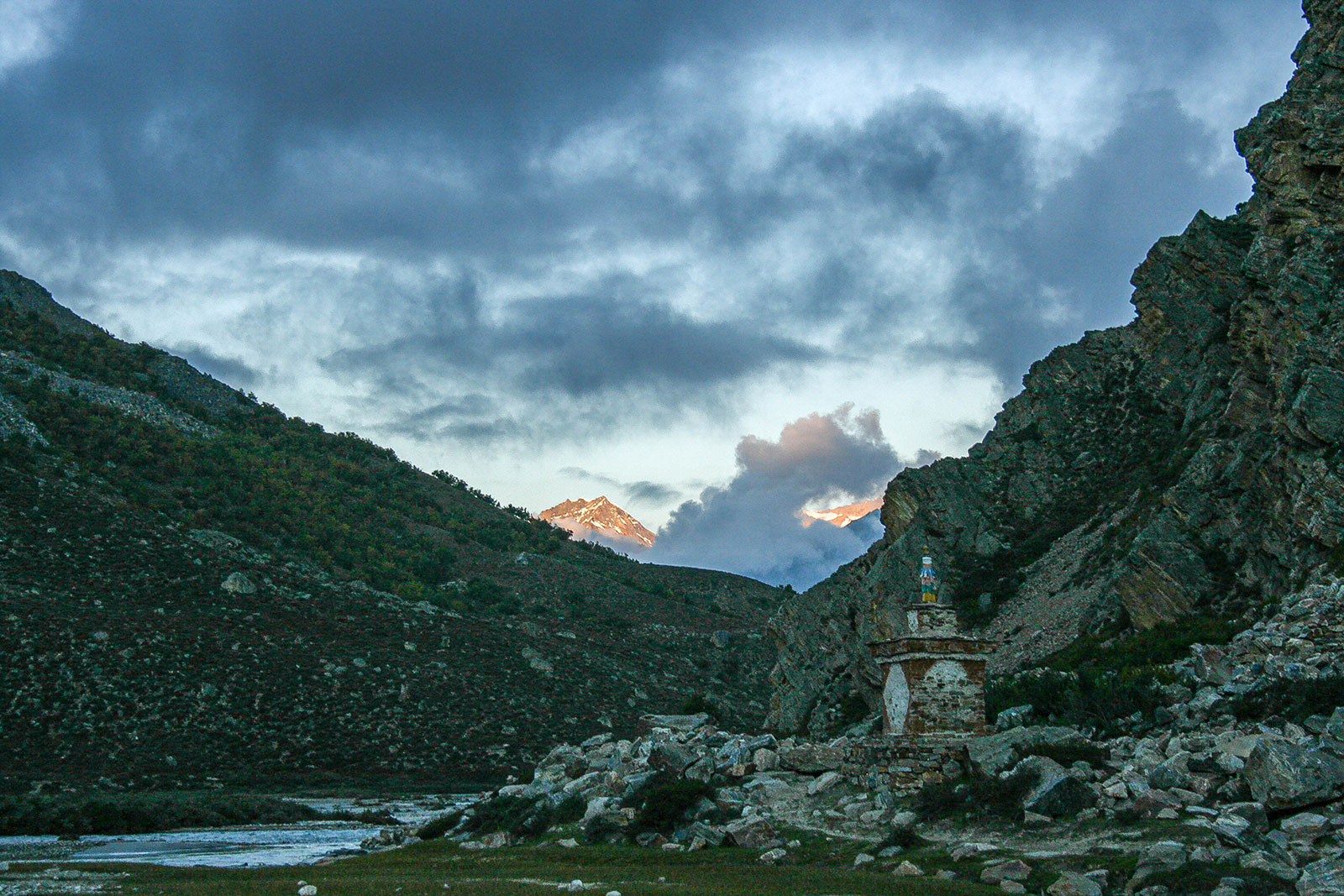Humla Limi Valley Trek
Humla Limi Valley Trek
DAYS
20
DIFFICULTY
Moderate/Strenuous
MAX ALTITUDE
4,949 M
ACCOMMODATION
Camping
DAYS
20
DIFFICULTY
Moderate/ Strenuous
MAX ALTITUDE
4949 M
ACCOMMODATION
Camping
Trip Overview
The Humla region of Nepal lies in the far west of the country and is so remote, that it has been out of reach for most visitors until very recently. Today it is one of the ultimate trekking dreams for hikers and those who wish to discover the unique natural and cultural landscape of Tibetan Buddhists. The first six days of the trek will take us through remote Humla villages, as we head to the Tibet border following the Karnali River, one of the main tributaries of the magnificent Ganges that feeds a large part of the Indian subcontinent. After we reach the border of Tibet at the small town of Hilsa, we will go West, following the border, and the course of the Limi River for another ten days. Surrounded by magnificent mountains, we will be passing rare Tibetan Buddhist villages, nomads and their animals and will be bathing in hot springs on our way.
Throughout this trek, we will be sleeping in tents. Our group will consist of experienced and reliable staff, including a guide, cooks, and porters to carry all the trekking gear, together with some pack animals. We can guarantee high-quality camping equipment and a variety of healthy, hygienic and delicious food on this adventure.
This is a trek for those with a real sense of adventure, who are happy to embrace basic living conditions in order to experience remote, rural mountain people’s life in Nepal. It is qualified as moderate, with occasional strenuous days and thus a reasonable level of fitness is required.
Day 1: Arrival in Nepal and passport to Himalayan Quests
Day 2: Trek briefing and preparation
Day 3: Fly to Nepalgunj on the border of India. Overnight in Nepalgunj
Day 4: Fly Nepalgunj to Simikot (2,910m). Trek to Dharapuri (2300m), approx 5 hours
Day 5: Dharapuri to Kermi (2,870m), approx 6 hours
Day 6: Kermi to Yalbung (3,060m), approx 6 hours
Day 7: Yalbung to Talkot (3,073m), approx 5 hours
Day 8: Talkot to Yari (3,663m), approx 7 hours
Day 9: Yari to Hilsa (3,700m) via Nara La Pass (4,620m), approx 6 hours
Day 10: Hilsa to Manepeme (3,990m), approx 5 hours
Day 11: Manepeme to Til (4,000m), approx 6 hours
Day 12: Rest day in Til, by Limi River
Day 13: Til through Halji to Tatopani (3,950m), approx 8 hours
Day 14: Tatopani to Talung (4,370m), approx 8 hours.
Day 15: Talung via Nyalu La Pass (4,949m) to Shinjungma (3,620m), approx 8 hours
Day 16: Shinjungma to Kermi (2,670m), approx 7 hours
Day 17: Rest day in Kermi
Day 18: Kermi to Dharapuri (2,300m), approx 6 hours
Day 19: Dharapuri to Simikot (2,950m), approx 6 hours
Day 20: Fly Simikot to Nepalgunj and on to Kathmandu
NOTES:
The trek itinerary is a guide only and may be subject to change at short notice
In order to obtain your Humla restricted access permit, we need your original passport at least 2 working days before departure.
Day 1: Arrival in Nepal and passport to Himalayan Quests.
Day 2: Trek briefing and preparation
Day 3: Fly from Kathmandu to Nepalgunj on the border of India. Overnight in a hotel in Nepalgunj.
Day 4: Early in the morning we fly from Nepalgunj to Simikot (2,910m) heading over the Terai and into the foothills of the Himalayas. On the 45 minutes flight, we will have a first chance to glimpse the high snow-capped Himalayan peaks. Landing in Simikot, the center of Humla district, we will have some time to explore the streets of this small hill town and have lunch, prepared by our crew. After lunch, we will walk to Dharapuri (2,300m), through the spectacular landscape of the Karnali River valley. We will camp in Dharapuri, approx. 5 hours.
Day 5: Dharapuri to Kermi (2,870m). Today we will follow the Karnali River Valley, passing through little Hindu and Buddhist villages. We will have a hot lunch on the way and camp high above the Karnali, with magnificent views of the valley. Close to Kermi (approx. 30-minute walk) are small hot springs, where we can relax our bodies. Kermi is the first of the completely Buddhist villages on our way and from here on, we will be passing many other little Buddhist villages and settlements, and their little temples – gompas, approx. 6 hours.
Day 6: Kermi to Yalbung (3,060m). Again today we walk mostly by the Karnali River. On the way, we will meet caravans of mules, goats, and dzos (crossbreed of a yak and a cow) that are bringing goods from Tibet to the villages in Humla. We will have a hot lunch by the river along the way and again, camp above the river below a small village and one of the biggest and most important monasteries in this area – Namkha Khyung Dzong Gompa, approx. 6 hours.
Day 7: Yalbung to Talkot (3,073m). Today we walk to Talkot. The path will lead us high, the scenery will change from dense forests to more bare areas of stone and sand, with low bushes scattered all around. After we reach our campsite by the river, we can take a 30-minute walk to one of the most important monasteries of the Sakya lineage of Tibetan Buddhism in this region – Dhungkar Choezon Gompa, approx. 5 hours.
Day 8: Talkot to Yari (3,663m). A very slow and gradual ascent brings us high on to deserted land, below the Nara La Pass. About halfway we reach a dirt road that was built to connect the China/Tibet border to the villages lower in the region. This night we will camp below the Nara La Pass, with beautiful views of the valley, approx. 7 hours.
Day 9: Yari to Hilsa (3,700m) via Nara La Pass (4,620m). Today is a strenuous day as we cross the Nara La Pass. The pass is marked by colorful Tibetan prayer flags, fluttering in the strong wind, sending prayers out into nature. The views of the mountains on the other side of the pass are breathtaking. Descending from the pass we can see the Limi Valley and Tibet. We then make a long descent to Hilsa, a small town on the Tibet – Nepal border. Camp in Hilsa, approx. 6 hours.
Day 10: Hilsa to Manepeme (3,990m). Today we continue our ascent taking us from the Tibetan border into the beauty of the Limi Valley. Camp in Manepeme, approx. 5 hours.
Day 11: Manepeme to Til (4,000m). First, we head up over a small pass and then down, all the way to the River Limi, where we will stop for lunch. After lunch, we continue for a short while to our camping spot in Til, approx. 6 hours.
Day 12: Rest day in Til by the Limi River, where we can do short day walks, rest by the river and observe the big Himalayan vultures – griffons, nesting right above us.
Day 13: Til through Halji to Tatopani (3,950m). This long day takes us first to the small town of Halji, nestled between the snow-peaked mountains in the south and the glacier in the north. With its beautiful gompa – Buddhist temple and a long wall of mani stones, Halji makes an interesting stop on our way. Just out of Halji we stop for lunch and then continue to a camping place called Tatopani, which means “hot springs”. Natural hot springs, coming from the ground beneath our camp offer an opportunity to wash both our clothes and ourselves. Camp in Tatopani, approx. 8 hours.
Day 14: Tatopani to Talung (4,370m). From Tatopani we walk through the swampy wetland, and up over a small pass and then back down, passing a beautiful turquoise lake to our camping ground by the river in Talung, approx. 8 hours.
Day 15: Talung via Nyalu La Pass (4,949m) to Shinjungma (3,620m). We start early for the climb up over Nayalu La Pass. From the top of the pass, there are breathtaking 360-degree views. This long day takes us through beautiful grasslands, up over a high pass and back down to the river to our camping ground, approx. 8 hours.
Day 16: Shinjungma to Kermi (2,670m). A long day of mostly downhill walking, taking us through rhododendron forests. We hit the trail once again in Kermi, where we will camp above the Karnali River, approx. 7 hours.
Day 17: Rest day in Kermi with possible day walks and a visit to the local hot springs.
Day 18: Kermi to Dharapuri (2,300m). Today we retrace our steps along the river to Dharapuri. Camp by the river in Dharapuri, approx. 6 hours.
Day 19: Dharapuri to Simikot (2,950m). On our last day of the trek, we finish with the long uphill back to Simikot. We will camp in the small camping ground at Simikot and the afternoon can be spent relaxing and exploring the local bazaars, approx. 6 hours.
Day 20: In the morning we fly from Simikot back to Nepaljung and from Nepalgunj to Kathmandu on the same day.
Himalayan Quests uses a layering system where different pieces of clothing are worn together or separately to achieve optimum body temperature control. The upper body garments listed here are either synthetic or merino wool garments that retain their insulating properties when wet, or nylon or Gore-Tex layers which help prevent heat loss by cutting wind, rain, and snow.
This is a guideline only
| UPPER BODY LAYERS | ||
| Equipment | Quantity | Comments |
| T-Shirts – walking | 2 | We recommend merino wool, Capilene or other synthetic fabric as they wick away the moisture and dry quickly. No cotton. |
| T-shirt – sleeping | 1 | This can be cotton |
| Base layers (ie thermal top) | 1 | Lightweight or mid-weight long-sleeved t-shirt of merino wool, polyester, Capilene, or Polartec power dry |
| Top insulating Layers | 1 | Mid-weight fleece that can be worn over other layers |
| Fleece Vest | 1 | |
| Rain jacket | 1 | |
| Down Jacket | 1 | |
| LOWER BODY LAYERS | ||
| Equipment | Quantity | Comments |
| Underwear | Sufficient for the trek (remember you can wash them) | |
| Thermal long johns/long underwear | 1 | |
| Trekking Trousers | 2 | Lightweight quick-dry trousers (no cotton). Zip offs are good |
| Evening/sleeping trousers | 1 optional | 1 pair of lightweight tracksuit bottoms (sweat pants) or yoga style trousers for evening wear and sleeping in. No jeans. |
| Hiking Shorts | 1 | If no zip-off trousers. Below the knee for ladies |
| Rain Pants | 1 | |
| PACKS & BAGS | ||
| Equipment | Quantity | Comments |
| Day pack | 1 | Approx. 35ltrs. HQ will provide you with a duffle bag for your trekking gear |
| Sleeping bag with compression sack | 1 | Minimum 3 season |
| Sleeping bag liner | 1 | Optional |
| FOOTWEAR | ||
| Equipment | Quantity | Comments |
| Hiking boots | 1 | Must be well worn and comfortable with ankle support |
| Socks | 3 | |
| Flip flops/Camp shoes | 1 | Lightweight for evening use |
| MISCELLANEOUS ITEMS | ||
| Equipment | Quantity | Comments |
| Water bottles | 2 | One liter each, Nalgene or Sig style or a bladder if preferred |
| Water purification drops | 1 | Cheap and easy to buy in Kathmandu (Piyus) |
| Lip Balm | 1 | With SPF factor |
| Sunscreen | 1 | We recommend SPF 30 or greater |
| Mosquito repellent | 1 | |
| Personal first aid kit | 1 | To include any prescribed medications |
| Sunglasses | 1 | |
| Bandana/Buff | 1 | Useful for a variety of purposes. |
| Flashlight /head torch | 1 | Head torch is best as it leaves your hands free + extra batteries |
| Travel towel | 1 | Lightweight and compact |
| Wash kit | Travel size items for the trek & eco friendly if possible | |
| Instant Hand Sanitizer | 1 | Alcohol-based for keeping hands clean |
| Sun hat | 1 | |
| Warm hat | 1 | |
| Gloves | 1 | |
| Trekking poles | Optional | |
| Trekking snacks | Good selection available in KTM | |
| Camera | With charger &/or extra batteries | |
| Toilet paper & rubbish bag | ||
| Book/journal | ||
| Pack of cards/travel game | 1 | For evening entertainment |
| Passport photos | Always useful and a must-have if you want a local sim card | |
| Photocopies of all your important documents | ||
| A great sense of humor & a positive attitude | Essential – don’t come without it!! J | |
Your trek cost includes:
- Pre-trip advice and detailed information
- Expert trip leadership and motivated staff for the duration of the trek
- Airport transfers in Nepal (where applicable)
- 2 nights accommodation pre-trek & 1-night post-trek in Kathmandu
- 1-night accommodation pre or post-trek in Pokhara (where applicable)
- Transportation to and from trek start and finish for you and your trekking team (different budget options available)
- Basic teahouse/lodge/camping accommodation during the trek on a twin sharing basis
- During the trek all meals on a full board basis (breakfast, lunch, and dinner) to include tea/coffee during the meals, but excluding any drinks outside of the meal times
- All permits, conservation area, and restricted area fees
- Porters
- Insurance and equipment for Nepali staff
- Rescue assistance
- Group medical kit
Your trek cost does NOT include:
- International flights to and from Kathmandu, Nepal
- Visa for Nepal
- Travel insurance (insurance to include evacuation is mandatory. Please make sure you are covered to the correct altitude)
- Personal expenses such as fizzy drinks, chocolate, gifts, snacks, hot showers during the trek, etc.
- Meals unless specified
- Sightseeing
- Gratuities
- Excess baggage on internal flights
- Charges incurred as a result of delays beyond the control of Himalayan Quests
Day 1: Arrival in Nepal and passport to Himalayan Quests
Day 2: Trek briefing and preparation
Day 3: Fly to Nepalgunj on the border of India. Overnight in Nepalgunj
Day 4: Fly Nepalgunj to Simikot (2,910m). Trek to Dharapuri (2300m), approx 5 hours
Day 5: Dharapuri to Kermi (2,870m), approx 6 hours
Day 6: Kermi to Yalbung (3,060m), approx 6 hours
Day 7: Yalbung to Talkot (3,073m), approx 5 hours
Day 8: Talkot to Yari (3,663m), approx 7 hours
Day 9: Yari to Hilsa (3,700m) via Nara La Pass (4,620m), approx 6 hours
Day 10: Hilsa to Manepeme (3,990m), approx 5 hours
Day 11: Manepeme to Til (4,000m), approx 6 hours
Day 12: Rest day in Til, by Limi River
Day 13: Til through Halji to Tatopani (3,950m), approx 8 hours
Day 14: Tatopani to Talung (4,370m), approx 8 hours.
Day 15: Talung via Nyalu La Pass (4,949m) to Shinjungma (3,620m), approx 8 hours
Day 16: Shinjungma to Kermi (2,670m), approx 7 hours
Day 17: Rest day in Kermi
Day 18: Kermi to Dharapuri (2,300m), approx 6 hours
Day 19: Dharapuri to Simikot (2,950m), approx 6 hours
Day 20: Fly Simikot to Nepalgunj and on to Kathmandu
NOTES:
The trek itinerary is a guide only and may be subject to change at short notice
In order to obtain your Humla restricted access permit, we need your original passport at least 2 working days before departure.
Day 1: Arrival in Nepal and passport to Himalayan Quests.
Day 2: Trek briefing and preparation
Day 3: Fly from Kathmandu to Nepalgunj on the border of India. Overnight in a hotel in Nepalgunj.
Day 4: Early in the morning we fly from Nepalgunj to Simikot (2,910m) heading over the Terai and into the foothills of the Himalayas. On the 45 minutes flight, we will have a first chance to glimpse the high snow-capped Himalayan peaks. Landing in Simikot, the center of Humla district, we will have some time to explore the streets of this small hill town and have lunch, prepared by our crew. After lunch, we will walk to Dharapuri (2,300m), through the spectacular landscape of the Karnali River valley. We will camp in Dharapuri, approx. 5 hours.
Day 5: Dharapuri to Kermi (2,870m). Today we will follow the Karnali River Valley, passing through little Hindu and Buddhist villages. We will have a hot lunch on the way and camp high above the Karnali, with magnificent views of the valley. Close to Kermi (approx. 30-minute walk) are small hot springs, where we can relax our bodies. Kermi is the first of the completely Buddhist villages on our way and from here on, we will be passing many other little Buddhist villages and settlements, and their little temples – gompas, approx. 6 hours.
Day 6: Kermi to Yalbung (3,060m). Again today we walk mostly by the Karnali River. On the way, we will meet caravans of mules, goats, and dzos (crossbreed of a yak and a cow) that are bringing goods from Tibet to the villages in Humla. We will have a hot lunch by the river along the way and again, camp above the river below a small village and one of the biggest and most important monasteries in this area – Namkha Khyung Dzong Gompa, approx. 6 hours.
Day 7: Yalbung to Talkot (3,073m). Today we walk to Talkot. The path will lead us high, the scenery will change from dense forests to more bare areas of stone and sand, with low bushes scattered all around. After we reach our campsite by the river, we can take a 30-minute walk to one of the most important monasteries of the Sakya lineage of Tibetan Buddhism in this region – Dhungkar Choezon Gompa, approx. 5 hours.
Day 8: Talkot to Yari (3,663m). A very slow and gradual ascent brings us high on to deserted land, below the Nara La Pass. About halfway we reach a dirt road that was built to connect the China/Tibet border to the villages lower in the region. This night we will camp below the Nara La Pass, with beautiful views of the valley, approx. 7 hours.
Day 9: Yari to Hilsa (3,700m) via Nara La Pass (4,620m). Today is a strenuous day as we cross the Nara La Pass. The pass is marked by colorful Tibetan prayer flags, fluttering in the strong wind, sending prayers out into nature. The views of the mountains on the other side of the pass are breathtaking. Descending from the pass we can see the Limi Valley and Tibet. We then make a long descent to Hilsa, a small town on the Tibet – Nepal border. Camp in Hilsa, approx. 6 hours.
Day 10: Hilsa to Manepeme (3,990m). Today we continue our ascent taking us from the Tibetan border into the beauty of the Limi Valley. Camp in Manepeme, approx. 5 hours.
Day 11: Manepeme to Til (4,000m). First, we head up over a small pass and then down, all the way to the River Limi, where we will stop for lunch. After lunch, we continue for a short while to our camping spot in Til, approx. 6 hours.
Day 12: Rest day in Til by the Limi River, where we can do short day walks, rest by the river and observe the big Himalayan vultures – griffons, nesting right above us.
Day 13: Til through Halji to Tatopani (3,950m). This long day takes us first to the small town of Halji, nestled between the snow-peaked mountains in the south and the glacier in the north. With its beautiful gompa – Buddhist temple and a long wall of mani stones, Halji makes an interesting stop on our way. Just out of Halji we stop for lunch and then continue to a camping place called Tatopani, which means “hot springs”. Natural hot springs, coming from the ground beneath our camp offer an opportunity to wash both our clothes and ourselves. Camp in Tatopani, approx. 8 hours.
Day 14: Tatopani to Talung (4,370m). From Tatopani we walk through the swampy wetland, and up over a small pass and then back down, passing a beautiful turquoise lake to our camping ground by the river in Talung, approx. 8 hours.
Day 15: Talung via Nyalu La Pass (4,949m) to Shinjungma (3,620m). We start early for the climb up over Nayalu La Pass. From the top of the pass, there are breathtaking 360-degree views. This long day takes us through beautiful grasslands, up over a high pass and back down to the river to our camping ground, approx. 8 hours.
Day 16: Shinjungma to Kermi (2,670m). A long day of mostly downhill walking, taking us through rhododendron forests. We hit the trail once again in Kermi, where we will camp above the Karnali River, approx. 7 hours.
Day 17: Rest day in Kermi with possible day walks and a visit to the local hot springs.
Day 18: Kermi to Dharapuri (2,300m). Today we retrace our steps along the river to Dharapuri. Camp by the river in Dharapuri, approx. 6 hours.
Day 19: Dharapuri to Simikot (2,950m). On our last day of the trek, we finish with the long uphill back to Simikot. We will camp in the small camping ground at Simikot and the afternoon can be spent relaxing and exploring the local bazaars, approx. 6 hours.
Day 20: In the morning we fly from Simikot back to Nepaljung and from Nepalgunj to Kathmandu on the same day.
Trekking Gear List
Himalayan Quests uses a layering system where different pieces of clothing are worn together or separately to achieve optimum body temperature control. The upper body garments listed here are either synthetic or merino wool garments which retain their insulating properties when wet, or nylon or Gore-Tex layers which help prevent heat loss by cutting wind, rain and snow.
THIS IS A GUIDELINE ONLY
UPPER BODY LAYERS
- T Shirts – walking 2 Merino wool, Capilene or other synthetic, wicking fabric. No cotton
- T-shirt – sleeping 1 Can be cotton
- Base layers 1 Light weight or mid weight thermal long sleeved t-shirt
- Top insulating Layers 1 Mid weight fleece that can be worn over other layers
- Fleece Vest 1
- Rain jacket 1
- Down jacket 1
LOWER BODY LAYERS
- Underwear Sufficient for trek (remember you can wash them)
- Thermal long underwear 1
- Trekking Trousers 2 Lightweight quick dry trousers (no cotton). Zip-offs are good
- Hiking Shorts 1 If no zip-off trousers. Below the knee for ladies
- Rain Pants 1
PACKS & BAGS
- Day pack 1 35ltrs. HQ will provide you with a duffle bag for your trekking gear
- Sleeping bag & compression sack 1 Minimum 3 season
FOOTWEAR
- Hiking boots 1 Must be well worn and comfortable with ankle support
- Socks 3 or 4
- Flip flops/Camp shoes 1 Lightweight for evening use
MISCELLANEOUS ITEMS
- Water bottles 2 One litre each, Nalgene or Sig style or a bladder if preferred
- Water purification drops Cheap and easy to buy in Kathmandu (Piyus)
- Sunscreen We recommend SPF 30 or greater
- Lip Balm With SPF factor
- Personal first aid kit To include any prescribed medications
- Sunglasses
- Bandana/Buff
- Flash light /head torch Head torch is best as it leaves your hands free + extra batteries
- Travel towel Lightweight and compact
- Wash kit Travel size items for the trek & eco friendly if possible
- Hand Sanitizer Alcohol-based for keeping hands clean
- Sun hat
- Warm hat
- Gloves
- Trekking poles Optional, but advised if you have dodgy knees
- Toilet paper & rubbish bag
- Trekking snacks Good selection available in KTM
- Camera With charger &/or extra batteries
- Book/journal
- Pack of cards/travel game For evening entertainment
- Mosquito repellent
- Passport photos Always useful and a must have if you want a local sim card
- Photocopies of all your important documents
- A great sense of humour & positive attitude Essential – don’t come without it!! J
Much of the above equipment can be bought cheaply in Kathmandu. You do not need to spend a fortune on gear.
Your trek cost includes:
- Pre-trip advice and detailed information
- Expert trip leadership and motivated staff for the duration of the trek
- Airport transfers in Nepal (where applicable)
- 2 nights accommodation pre-trek & 1-night post-trek in Kathmandu
- 1-night accommodation pre or post-trek in Pokhara (where applicable)
- Transportation to and from trek start and finish for you and your trekking team (different budget options available)
- Basic teahouse/lodge/camping accommodation during the trek on a twin sharing basis
- During the trek all meals on a full board basis (breakfast, lunch, and dinner) to include tea/coffee during the meals, but excluding any drinks outside of the meal times
- All permits, conservation area, and restricted area fees
- Porters
- Insurance and equipment for Nepali staff
- Rescue assistance
- Group medical kit
Your trek cost does NOT include:
- International flights to and from Kathmandu, Nepal
- Visa for Nepal
- Travel insurance (insurance to include evacuation is mandatory. Please make sure you are covered to the correct altitude)
- Personal expenses such as fizzy drinks, chocolate, gifts, snacks, hot showers during the trek, etc.
- Meals unless specified
- Sightseeing
- Gratuities
- Excess baggage on internal flights
- Charges incurred as a result of delays beyond the control of Himalayan Quests
Similar Trips

Lower Dolpo Phoksundo Lake Trek
21 Days
Lying in the rain shadow area of the Himalayas, this landscape resembles that of the Tibetan Plateau instead of the lush, green, monsoon watered hills found elsewhere in Nepal at comparative altitudes.
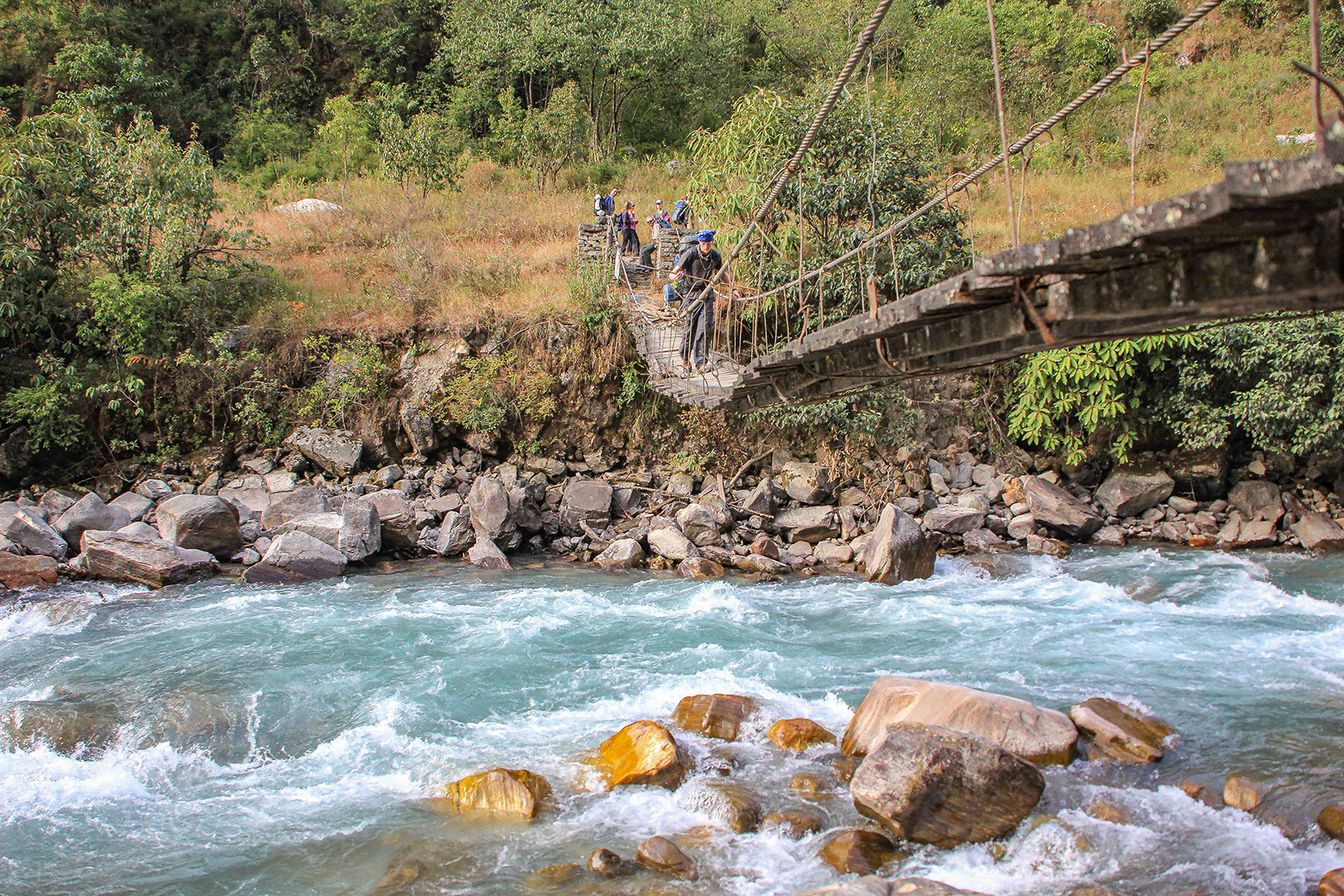
Kanchenjunga Base Camp Trek
26 Days
This circular trek takes you up through lush valleys full of seasonal flowers that receive the heaviest monsoon rains throughout the Himalayan range, north into spectacular high alpine landscapes full of woodlands and mountain streams.
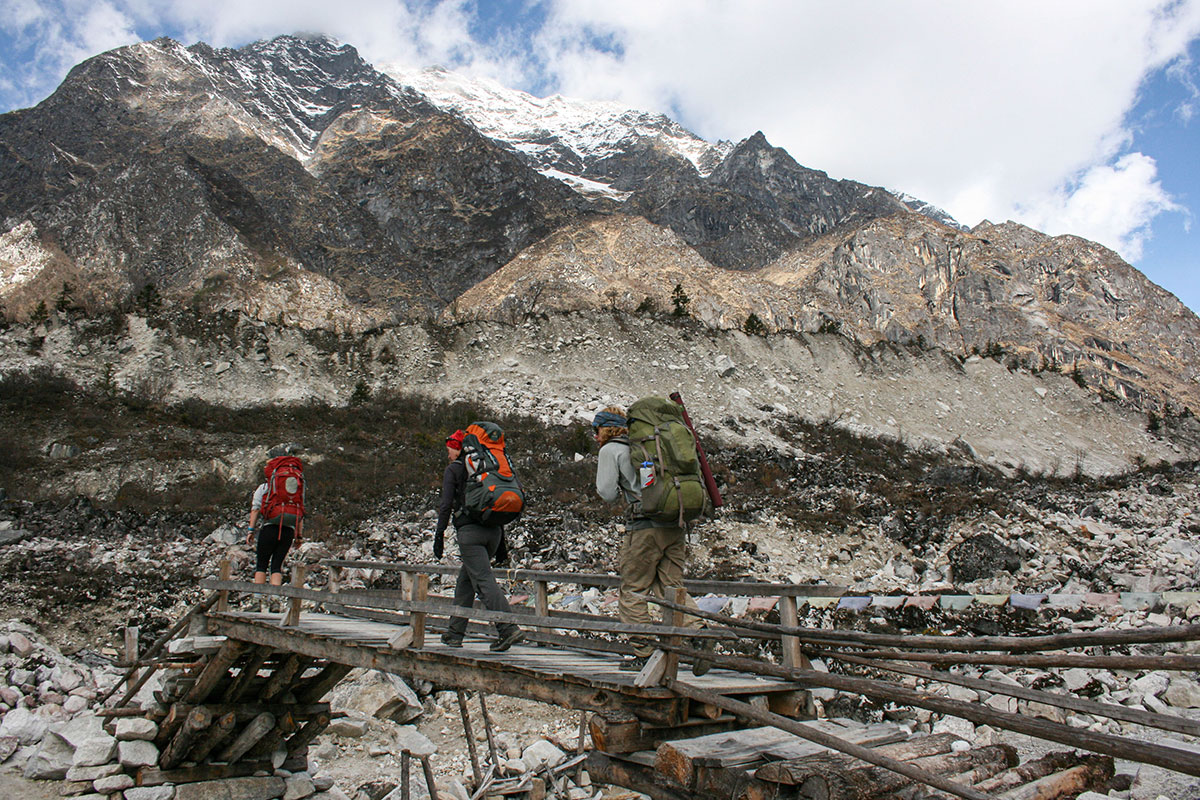
Tsum Valley Manaslu Circuit Trek
22 Days
Just as diverse as the ethnic population, so too the scenery varies from the lush, low elevation valleys growing rice and bananas, inhabited predominantly by the Hindu ethnic groups of Indo-Aryan origin, through rhododendron and bamboo forests, where you begin to encounter communities of Tibeto-Burmese origin who practice Hinduism, Buddhism or a mixture of both.
TSUM VALLEY MANASLU CIRCUIT TREK
22 Days
Just as diverse as the ethnic population, so too the scenery varies from the lush, low elevation valleys growing rice and bananas, inhabited predominantly by the Hindu ethnic groups of Indo-Aryan origin, through rhododendron and bamboo forests, where you begin to encounter communities of Tibeto-Burmese origin who practice Hinduism, Buddhism or a mixture of both.
CONTACT US
Let us help you plan the trip of your dreams
Address
GPO Box: 8974 CPC 437
Kathmandu, Nepal.
Nepal Govt. Registration
11881/424 1134/066
Phone
Our Team
Diaries
Featured Trips
Bespoke For You
CONTACT US
Let us help you plan the trip of your dreams
Address
GPO Box: 8974 CPC 437
Kathmandu, Nepal.
Nepal Govt. Registration
11881/424 1134/066
info@himalayanquests.com
Phone
+977 9849 141067

